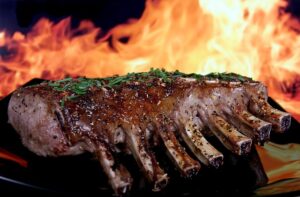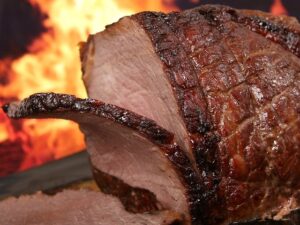Introduction
Excess carbohydrates in animals play a crucial role in providing energy and maintaining metabolic functions. Carbohydrates are a primary source of energy for animals, but what happens when they consume more carbohydrates than their bodies require? This article delves into the fate of excess carbohydrates in animals, exploring how they are stored and utilized.
Storage as Glycogen
Glycogen: Excess carbohydrates are initially converted into glycogen, a complex carbohydrate that serves as a storage form of glucose in animals. Glycogen is primarily stored in the liver and muscles. When blood glucose levels are high, the excess glucose is converted into glycogen through a process called glycogenesis. This stored glycogen can be later broken down to release glucose when the body needs an energy boost.
Liver Metabolism
Gluconeogenesis: In animals, the liver plays a crucial role in carbohydrate metabolism. When excess carbohydrates are consumed, the liver converts them into fatty acids through a process called lipogenesis. These fatty acids can be stored as triglycerides in adipose tissue for long-term energy storage.
Glycolysis: Additionally, the liver can also convert excess carbohydrates into pyruvate through a process called glycolysis. Pyruvate can then be further metabolized into acetyl-CoA, which enters the citric acid cycle to produce energy in the form of ATP.
Fat Storage
Adipose Tissue: Excess carbohydrates that are converted into fatty acids in the liver are transported to adipose tissue for storage. Adipose tissue acts as a reservoir for energy storage in the form of triglycerides. When the body requires energy, these stored triglycerides are broken down into fatty acids and glycerol through a process called lipolysis.
Role of Insulin
Insulin: Insulin, a hormone produced by the pancreas, plays a crucial role in regulating carbohydrate metabolism. When blood glucose levels rise after consuming excess carbohydrates, insulin is released to facilitate the uptake of glucose into cells. Insulin also promotes the storage of excess glucose as glycogen in the liver and muscles, as well as the conversion of glucose into fatty acids for storage in adipose tissue.
Utilization during Exercise
Exercise: During physical activity, excess carbohydrates stored as glycogen in the muscles are utilized as a readily available source of energy. As the muscles contract, glycogen is broken down into glucose, which is then metabolized through glycolysis to produce ATP, the energy currency of cells.
Conclusion
In conclusion, excess carbohydrates in animals are initially stored as glycogen in the liver and muscles. The liver plays a significant role in carbohydrate metabolism, converting excess carbohydrates into fatty acids and storing them in adipose tissue. Insulin regulates carbohydrate metabolism and promotes the storage of excess glucose as glycogen and fatty acids. During exercise, the stored glycogen in muscles is utilized as a source of energy. Understanding the fate of excess carbohydrates in animals provides insights into their energy storage and utilization mechanisms.
References
1. National Research Council (US) Subcommittee on Laboratory Animal Nutrition. Nutrient Requirements of Laboratory Animals: Fourth Revised Edition, 1995. National Academies Press (US). Available at: nap.edu.
2. Berg JM, Tymoczko JL, Gatto GJ. Stryer L. Biochemistry. 8th edition. New York: W H Freeman; 2015. Available at: ncbi.nlm.nih.gov.
3. Alberts B, Johnson A, Lewis J, Raff M, Roberts K, Walter P. Molecular Biology of the Cell. 4th edition. New York: Garland Science; 2002. Available at: ncbi.nlm.nih.gov.













